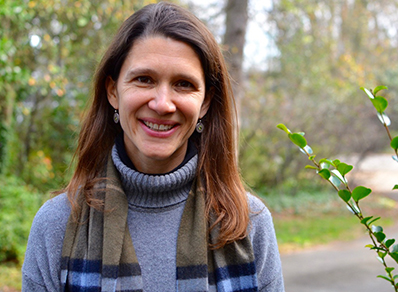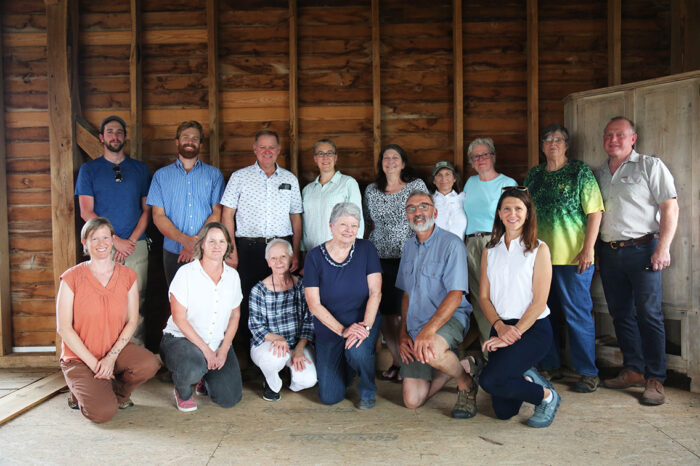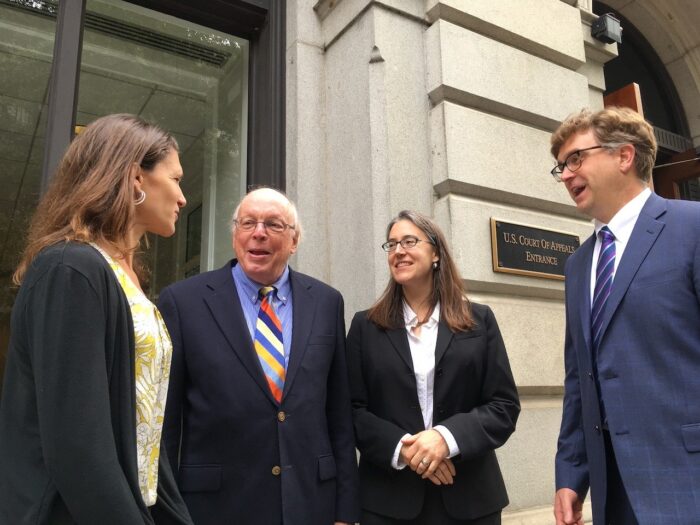Partnering to protect the Shenandoah Valley
Every year, the Southern Environmental Law Center gives out the James S. Dockery, Jr. Southern Environmental Leadership Award to leaders and organizations at the local and state level who have built exceptional environmental institutions in the South. This year’s recipient is Kate Wofford, executive director of the Alliance for the Shenandoah Valley.

Wofford has worked with local communities to protect their land and water resources for more than 20 years, serving as director of Shenandoah Valley Network from 2009 until 2018. She is the former director of conservation at the Wood River Land Trust in central Idaho.
We sat down with Wofford, who is originally from South Carolina, to see how she and other team members at Alliance for the Shenandoah Valley turned the organization into a conservation powerhouse and what excites her about their work.
What excites you about your role at the Alliance for the Shenandoah Valley?
I love my job. Alliance for the Shenandoah Valley works to protect the farm and forest lands, clean streams and rivers, and thriving communities in our extraordinary region. It’s a wonderful mission and I have the best coworkers.

How did the Alliance get started?
I feel very lucky to be part of the group of people who formed and are building the Alliance. The organization launched in in 2018, but it’s actually been around much longer. We came together from a merger of five long standing conservation groups. Our legacy groups were county-based around the Shenandoah Valley in Virginia. They were formed by community members who cared about local conservation issues. In some cases, the community members were inspired by the threat of a bad road project, others by the loss of farmland. They have terrific track records of success in their communities, influencing comprehensive plans, zoning and subdivision ordinances, working to encourage growth in the historic towns and small cities in our region and land protection out in the countryside.
Our group spent about a year in facilitated discussions and ultimately decided that we could have the most impact and lasting power if we created a single regional organization.
You’ve had a great amount of success in a short period of time. How have you done it and where are you seeing impacts of your work on the ground?
The track records of success, the trust, and legitimacy in the communities from the legacy organizations has carried forward, and since 2018, we’ve been able to grow and add new staff and new board members as a regional organization. I want to mention here a couple of newer program areas. First, we’re doing a lot of work with the agricultural community to improve farming practices for clean water, soil health, farm vitality. These are voluntary programs and partnership-based work with government agencies, local land trusts, and local watershed group partners. There was some question when we were expanding into this work whether this partnership-based work could coexist with our longstanding advocacy and sometimes litigation role. So far, I’m glad to say it’s going very well together with collaborative partners. Together we are bringing millions of federal and private dollars to conservation projects in the region, and our land use advocacy work at the Alliance is still going strong.
Is there a particular project that you’re working on right now that stands out?
Yes! We are working in a wonderful partnership of mayors and other community leaders to convert 49 miles of discontinued Norfolk Southern rail line into the Shenandoah Rail Trail. Every time I go home to Greenville, South Carolina, I’m blown away by the success of the Swamp Rabbit Trail and its positive impact in those communities and motivated by the role that the Upstate Forever played in getting that project going. I believe the Shenandoah Rail Trail would be equally transformative here in the Valley.

What role does SELC play for your organization and our region?
Our region benefits enormously from the work of SELC. I’ve had the great fortune of working closely with Sarah Francisco on many issues over the years, and I’ve learned so much from her about building strong relationships and winning campaigns. I really admire SELC attorneys’ approach. You’re a total powerhouse, but you recognize that you can’t do it by yourselves. Just the fact that one of your big awards recognizes people who are helping build organizations that partner with SELC is pretty cool.
Do you have any final thoughts on winning the Dockery Leadership Award?
Thanks to you all for the extraordinary work that SELC is doing finding solutions to hard problems right here in the South. I look forward to many years continuing our work together—you as the legal powerhouse, us as the place-based partner rooted in the valley, because there is much to protect and neither of us can do it alone.
